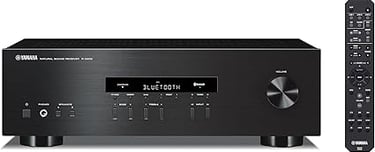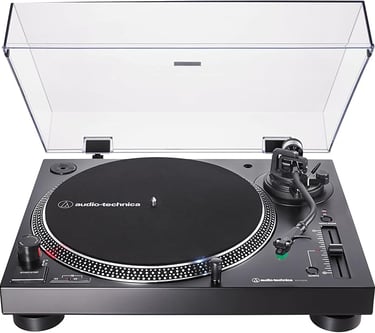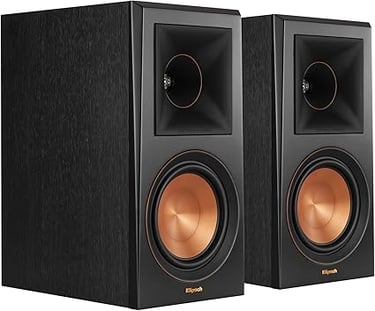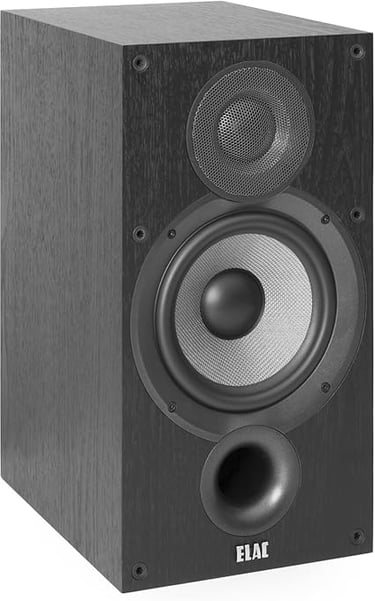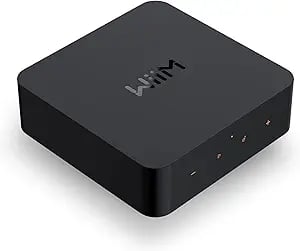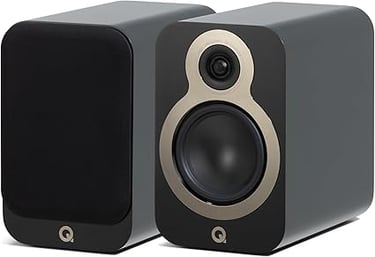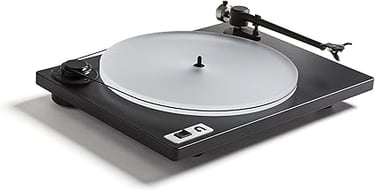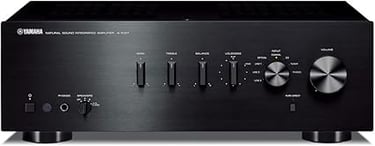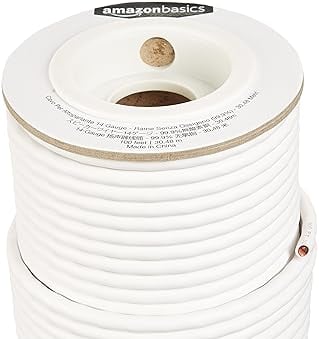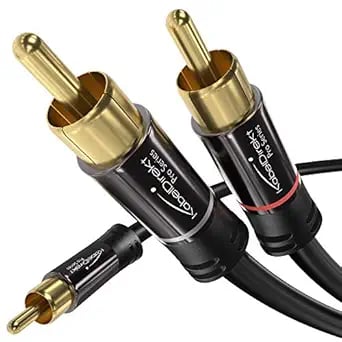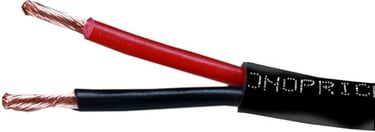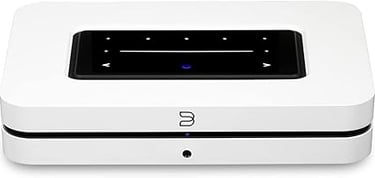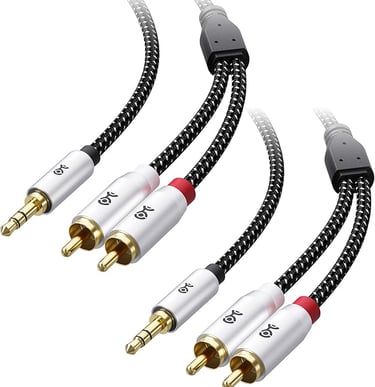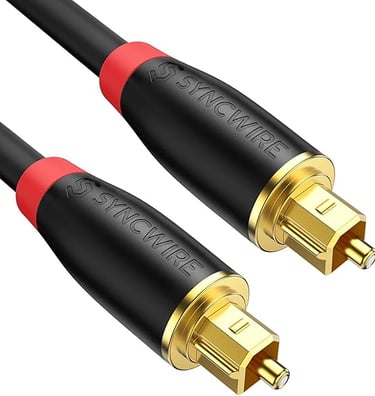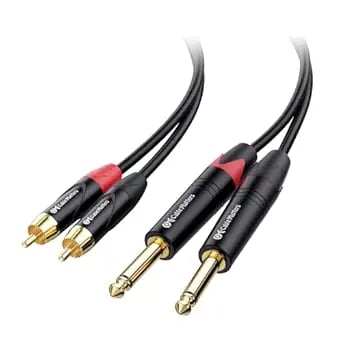Elevate Your Sound Experience
Discover premium audio gear crafted for clarity, performance, and timeless design.
At CK Damone Audio, we’re dedicated to exceptional sound quality. Whether you’re beginning your audiophile journey or refining a well-tuned system, we’ve curated a selection of top-tier audiophile gear — including speakers, turntables, amplifiers, DACs, and headphones — all chosen for their outstanding performance and fidelity.


Home Audio Basics
1. Home Theater Receiver
What Is a Home Theater Receiver?
A home theater receiver (also called an AV receiver) is the main control center of your home theater system. It connects all your devices—like your TV, speakers, game consoles, Blu-ray player, or streaming box—and brings everything together in one place.
The receiver has three key jobs:
Powers Your Speakers – It sends sound to your surround speakers so you can enjoy rich, room-filling audio.
Connects Your Devices – You can plug all your devices into the receiver and easily switch between them (for example, from watching a movie to playing a game).
Improves Sound and Video – It can enhance audio quality and send high-quality video (like 4K or HDR) to your TV or projector.
Think of it as the “heart” of your home theater—it keeps everything running smoothly and helps create a powerful, cinematic experience right in your living room.
2. Stereo Receiver
What Is a Stereo Receiver?
A stereo receiver is a simple, all-in-one device that powers two speakers and lets you enjoy music, radio, or audio from other devices. It combines a built-in amplifier (to power your speakers) with a tuner (for AM/FM radio), and often includes inputs for things like turntables, CD players, or streaming devices.
Unlike a home theater receiver, which supports surround sound, a stereo receiver is designed for 2-channel audio—perfect for music lovers who want clear, high-quality sound from just two speakers.
In short: If you’re building a setup focused on music or want a clean, straightforward system for great stereo sound, a stereo receiver is a great choice.
Stereo Receiver vs. AV Receiver – What’s the Difference?
A stereo receiver is designed for music lovers who want simple, high-quality sound using just two speakers (left and right). It’s great for vinyl setups, streaming music, or connecting devices like CD players and turntables. Many modern stereo receivers also include Bluetooth for wireless streaming and phono inputs for connecting a record player directly—no extra preamp needed.
In contrast, an AV receiver (short for Audio/Video receiver) is built for home theater use. It powers multiple speakers (like 5.1 or 7.2 surround sound) and connects video sources like TVs, projectors, Blu-ray players, and gaming consoles. It handles both audio and video, while a stereo receiver focuses on pure 2-channel audio.
In Summary:
Feature
Speaker Channels
Stereo Receiver: 2 (left and right)
AV Receiver: 5.1, 7.2,or more for surround sound
Purpose
Stereo Receiver: Music listening
AV Receiver: Home theater & mixed media
Video Support
Stereo Receiver: No
AV Receiver: Yes (HDMI, 4K, HDR, etc.)
Bluetooth
Stereo Receiver: Often included for music streaming
AV Receiver: Often included for multi-device streaming
Phono Input
Stereo Receiver: Common (for turntables)
AV Receiver: Less common
Setup Simplicity
Stereo Receiver: Easier and more straightforward
AV Receiver: More complex, customizable
If your focus is music and simplicity, a stereo receiver is a great match. If you want surround sound and video switching for movies and gaming, an AV receiver is the way to go.
3. Integrated Amplifier
What Is an Integrated Amplifier?
An integrated amplifier is a device that combines two key parts of an audio system into one box:
A preamplifier, which lets you control volume and switch between audio sources (like a turntable, CD player, or streaming device).
A power amplifier, which boosts the audio signal so it can drive your speakers.
In short: An integrated amplifier is the heart of a 2-channel stereo setup, powering your speakers and giving you control over your music.
How It Differs from Other Components:
Vs. Stereo Receiver: A stereo receiver is like an integrated amp plus a built-in radio tuner (AM/FM). Some stereo receivers also include more features like Bluetooth or a DAC (digital-to-analog converter).
Vs. Separates: In high-end audio systems, the preamp and power amp are sometimes sold as separate units for maximum performance and customization. An integrated amp combines them in one chassis for convenience and great sound quality.
Common Features in Modern Integrated Amps:
Phono input for turntables
Built-in DACs for digital sources
Bluetooth or Wi-Fi for wireless streaming
Tone controls for bass and treble adjustment
If you care about audio quality and want a clean, focused setup for music, an integrated amplifier is an excellent choice.
4. Power Amps
What Is a Power Amp?
A power amplifier, or power amp, is a component in an audio system that does one main job:
👉 It takes a low-level audio signal and amplifies it so it’s strong enough to drive speakers.
Power amps don’t have volume knobs, input selectors, or tone controls—they simply boost the signal they receive from another device, like a preamplifier or an integrated amplifier.
Where Does It Fit in a System?
A preamplifier handles the controls (volume, input switching, etc.).
The power amplifier then takes that signal and powers the speakers.
This “separates” approach—using a standalone preamp and power amp—is popular in high-end audio systems because it allows for better sound quality, more power, and greater flexibility when upgrading individual components.
Power Amp vs. Other Audio Gear:
1. Component: Power Amp
Main Role: Boosts signal to power speakers
Has Volume Control? Drives Speakers?
No Yes
2. Component: Integrated Amp
Main Role: Combines preamp + power amp
Has Volume Control? Drives Speakers?
Yes Yes
3. Component: Stereo Receiver
Main Role: Integrated amp + radio tuner
Has Volume Control? Drives Speakers?
Yes Yes
3. Component: Preamplifier
Main Role: Manages sources & volume
Has Volume Control? Drives Speakers?
Yes No
In short: A power amp is all about clean, reliable power. It’s essential for high-performance systems where sound quality and speaker control really matter.
5. Preamp & Processor
What Is a Preamp?
A preamplifier, or preamp, is a component that prepares the audio signal for further amplification. It does two main things:
Controls volume and source selection – lets you choose between devices (like a turntable, CD player, or streamer) and adjust the volume.
Boosts weak signals – especially from sources like turntables (via a phono stage), bringing them up to a standard level that a power amplifier can work with.
A preamp doesn’t power speakers on its own—it simply sends a clean, manageable signal to a power amplifier, which does the heavy lifting.
What Is a Processor? (Home Theater Processor / AV Processor)
A processor, also known as an AV processor, surround processor, or pre/pro, is essentially the home theater version of a preamp—but with more advanced features for movies, streaming, and gaming.
It performs all the preamp functions (volume control, source switching), but also:
Decodes surround sound formats (like Dolby Atmos, DTS:X)
Processes video signals (4K/8K passthrough, HDR, HDMI switching)
Manages multiple channels for surround speaker setups (5.1, 7.2, etc.)
Often includes room correction systems (like Dirac Live or Audyssey)
An AV processor sends the audio signal to separate power amplifiers for each channel, giving you more control, better sound quality, and scalability compared to an all-in-one AV receiver.
In Summary:
1. Component: Preamplifier
Purpose: Volume control, input switching, signal boost
For Music or Movies? Music
Needs Power Amp? Yes
2. Component: Processor
Purpose: Surround sound decoding, video switching
For Music or Movies? Home Theater
Needs Power Amp? Yes
In short:
Use a preamplifier for high-fidelity 2-channel music systems.
Use a processor when building a high-performance surround sound home theater with separate amplifiers.
6. DAC
What Is a DAC?
A DAC, or Digital-to-Analog Converter, is a device that turns digital audio signals (like the ones from your phone, computer, streamer, or CD player) into analog signals that speakers and headphones can actually play.
In simple terms:
👉 A DAC makes digital music sound real.
All digital audio (MP3s, streaming music, etc.) is stored as 1s and 0s. But speakers and headphones need an analog signal—an electrical waveform—to create sound. The DAC does the important job of translating that digital data into smooth, detailed sound you can hear.
Why Use an External DAC?
Most devices (phones, laptops, tablets) have a built-in DAC—but they’re usually basic and not optimized for high-quality audio. An external DAC often provides:
Better sound clarity
Less noise or distortion
Support for high-resolution audio
Improved headphone performance
Where DACs Are Found:
Inside smartphones, laptops, and streaming devices
Built into audio gear like integrated amps, AV receivers, and sound cards
As standalone units or USB DACs for desktop or portable use
In Short: A DAC is essential if you're serious about sound quality—especially when playing digital music through high-end headphones, speakers, or home audio systems.
This page is being updated with audio gears, stay tuned!
Your Journey to Pure Sound Starts Here
Creating your first high-fidelity listening space doesn’t have to break the bank—or feel overwhelming. Whether you're just getting into the world of quality sound or looking to upgrade your current setup without overspending, this guide offers thoughtfully curated examples to get you started.
Use these carefully selected, well-reviewed audio components as a starting point for creating a high-fidelity listening room that balances performance and value. Each setup is designed to help you experience rich, immersive sound while staying within a reasonable budget. From speakers and amplifiers to turntables and cables, we’ve included practical options that deliver excellent results for their price—and that are easy to build upon as your audio journey evolves.
Disclaimer: Full Terms & Conditions
The tips and information contained in this article are for educational purposes only, to guide audiophiles in making informed decisions and conducting research based on the topics discussed in this guide. The audio component recommendations include Amazon affiliate links for your convenience—at no additional cost to you. We encourage you to research thoroughly, especially when considering higher-priced items. Each product we recommend is based on our personal opinions, along with positive feedback from satisfied customers through our affiliate partners.
1. Sample Setup: Beginner Audiophile
Optional: FosPower RCA Cable
2. Sample Setup: Intermediate Streaming + Vinyl
RCA: KabelDirekt, Cable Matters
3. Sample Setup: Digital Audiophile
RCA Cable Recommendations by Component
Turntable to Amp:
1. U-Turn Orbit Plus Gen 2
Upgrade Option: FosPower 2RCA M/M - 3ft
Upgrade Option: Cable Matters RCA to 3.5mm - 3ft
2. Audio-Technica AT-LP120XUSB
Built-in RCA: No extra cable needed
Streamer to Amp:
1. WiiM Pro
Analog: KabelDirekt RCA Y-Cable - 6ft
Digital (Optical): Syncwire Optical Cable - 6ft
2. Bluesound Node
Analog: KabelDirekt RCA Y-Cable - 6ft
Digital: Syncwire Optical Cable - 6ft
Tips for Setting Up Your System
Tips for Speakers, Components, Wiring & Protection
1. Planning Your Setup
Remember that your room is a crucial part of the sound system. Even the most expensive gear won’t sound great in an untreated or poorly arranged room. Simple additions like rugs, curtains, or acoustic panels can significantly improve sound quality. When setting up your audio system, it’s important to build around your actual needs rather than just chasing gear specs or trends. Think about how you plan to use your system—whether it's for music, movies, vinyl, or streaming—and prioritize the components that make the biggest impact, especially your speakers and amplifier. Upgrading gradually allows you to learn what matters most to your ears and listening space.
Room Layout: Consider speaker placement, listening position, and furniture to minimize reflections and obstructions.
Power Source: Identify a single, accessible wall outlet for powering your system. Use a high-quality surge protector (with EMI/RFI filtering) for all gear.
Ventilation: Ensure proper airflow around your amp/receiver and components to avoid overheating.
2. Speaker Placement Tips
Speaker placement plays a huge role when it comes to sound quality, experimenting with speaker position often makes a bigger difference than upgrading components.
🔹 Bookshelf Speakers:
Height: Place tweeters at ear level when seated.
Distance from Wall: 6–18 inches from the back wall to reduce bass boom.
Separation: Ideally as far apart as they are from your listening position (forming an equilateral triangle).
🔹 Floorstanding Speakers:
Toe-In: Slightly angle toward the listening position for a focused soundstage.
Isolation Pads/Spikes: Use to decouple from floors and reduce resonance.
3. Choosing and Setting Up Audio Components
It is wise to plan for the future. Choose components with extra inputs or streaming support, leave room in your setup for future upgrades, and consider a modular approach (like separates instead of all-in-one systems) if flexibility is important to you.
Turntable: Keep away from speakers to avoid vibration interference.
Amplifier/Receiver:
Match speaker impedance and power handling.
Connect inputs (turntable, CD player, DAC) securely.
DAC (if used): Connect via USB (for computers) or optical/coaxial (from streamers, TVs).
Streaming Devices: Ethernet connection often provides more stable performance than Wi-Fi.
4. Speaker Cable & Wiring Tips
While it’s tempting to buy premium cables, the truth is that functionality and build quality matter far more than brand names or exotic materials. A properly sized speaker wire (like 14-gauge for most home setups) and secure connectors such as banana plugs or solid RCA cables will serve you well without breaking the bank.
Gauge Matters:
Use 14-gauge cable for most setups.
Go 12-gauge for longer runs (>25 feet) or lower impedance speakers.
Polarity: Match + (red) and – (black) terminals on amp and speakers. Miswiring causes weak or hollow sound.
Cable Management:
Use zip ties or sleeves to avoid tangling.
Avoid running speaker wires parallel to power cables to minimize interference.
Cable & Wire Length Tips:
3ft: Best for vertically stacked components
6ft: Side-by-side on a rack
12ft+: Avoid unless needed — more length = more chance for interference
Keep RCA cables short to prevent signal loss
Run speaker cables away from power cords
5. Using a Surge Protector
Clean power and a clear signal path are key to reliable, distortion-free sound. A quality surge protector or power conditioner not only protects your equipment but also reduces electrical noise. Keep analog and digital signal cables organized and separate where possible, and avoid running them parallel to power cords to minimize interference.
Choose one with:
EMI/RFI filtering
Joule rating of 1,000+ for high-end gear
Multiple grounded outlets
Coaxial/ethernet protection if using networked or TV-connected audio gear
Don’t daisy-chain power strips.
Label cables for quick troubleshooting or upgrades.
6. Optional Accessories for Clean Setup
Banana plugs: Easy, secure speaker connections.
Power conditioners: For areas with dirty power or sensitive gear.
Wall plates or cable raceways: For aesthetic cable runs and hiding wires.
7. Testing & Final Adjustments
Play pink noise or test tones to check for balanced sound.
Use an SPL meter (or app) to ensure equal volume from all speakers.
Adjust speaker position and toe-in for best imaging and bass response.
Burn-in time: Some speakers and components may open up after ~20–50 hours of use.
Take your time dialing in the system. Let your gear settle in with some hours of use, and experiment with speaker angles and distances—you’d be surprised how much a few inches can change the overall soundstage and bass response. Above all, trust your ears. Measurements and online reviews are helpful, but your own experience matters most.
Finally, enjoy the process. Building and refining your setup is a journey, not a race. There’s no such thing as a perfect system—only one that’s perfect for you, your space, and the way you love to listen.
/budget-audiophile-system-setups-for-beginners
Explore the audio components featured in this audio setup guide.
Beginner Audiophile
Intermediate Streaming + Vinyl
Digital Audiophile
Speaker Cables & RCA Wires
Budget-Friendly Audiophile Guide for Beginners
(with Recommended Components)
Beginner audiophile? Discover affordable, high-quality components—like speakers, amplifiers, and turntables—to build your ideal first home audio setup.
CK Damone Audio | Jul 28, 2025
Disclaimer: This page contains Amazon and partner affiliate links. We may earn a small commission if you make a purchase—at no extra cost to you.
Explore Precision-Crafted Audio Components | Audiophile-Approved Gear
Discover high-performance, precision-crafted audio gear handpicked for audiophiles. Explore components designed for pure, high-fidelity sound.
Floorstanding Speakers
Klipsch Heritage Series IV
Floorstanding Speakers
The Heresy IV is the most compact model in Klipsch’s iconic Heritage series. Designed and handcrafted in the USA, it delivers dynamic, efficient sound through horn-loaded technology—ideal for both critical music listening and immersive home theater setups.
Description & Key Features:
Rear Port Design
The Heresy IV is the first in its line to feature a rear-facing Tractrix® port, significantly improving bass performance and efficiency.
Horn-Loaded Midrange & Tweeter
K‑702 compression driver with a wide-dispersion Tractrix horn for smooth, detailed mids.
K‑107‑TI titanium diaphragm tweeter ensures sparkling highs with low distortion.
Powerful Yet Efficient
With a high sensitivity design (~99 dB), the Heresy IV plays effortlessly even with low-power amplifiers, making it suitable for tube and solid-state systems.
Classic Craftsmanship:
Built in Hope, Arkansas, each cabinet is finished in real wood veneer (Walnut, Oak, or Black), featuring retro-modern aesthetics and high-end construction.
Bi-Wiring Capable
Dual binding posts allow for bi-wiring or bi-amping flexibility.
👥 What Audiophiles Say
Live Energy & Clarity
Widely praised for its dynamic "live music" feel, Heresy IV speakers deliver a bold, room-filling presentation with standout midrange and vocal realism.
Easy to Drive
Perfect match for low-wattage tube amps or warm, musical solid-state gear.
Room-Friendly Design
Compact for a floorstander and performs well even when placed closer to walls.
Summary
Model: Klipsch Heresy IV
Cabinet Finishes: Available in American Walnut, Distressed Oak, and Black Ash
Frequency Range: Approximately 48 Hz to 20 kHz
Sensitivity: Around 99 dB
Amplifier Compatibility: Works well with both low- and high-powered amplifiers, including tube and solid-state options
Use Case: Designed for music-first systems, excellent for stereo listening, and also performs well as front left/right speakers in a home theater setup
Country of Origin: Handcrafted in the USA (Hope, Arkansas)
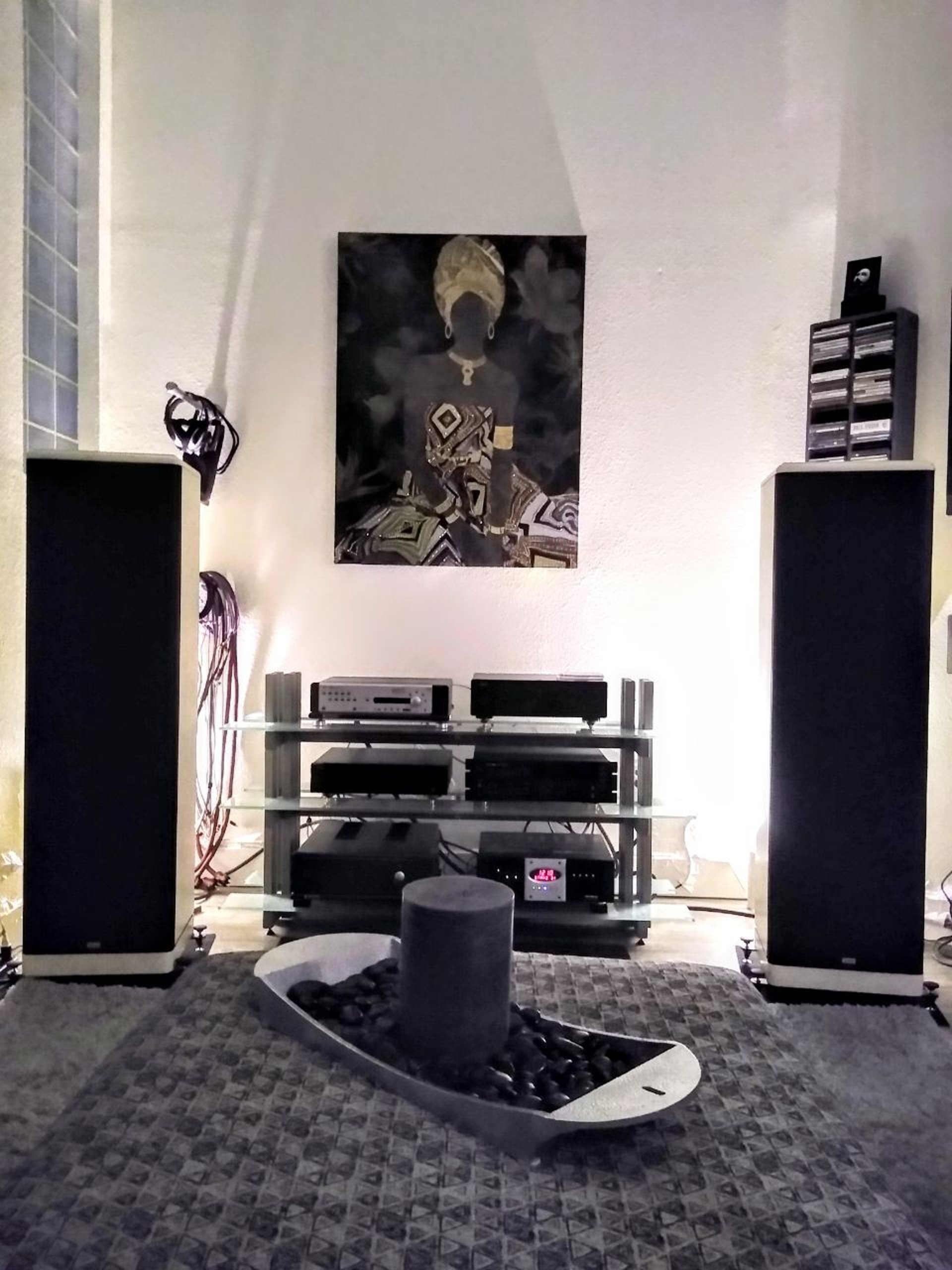
CK Damone Design
©2024 CKDamoneDesign.com All Rights Reserved.
Damone King
Residential and Commercial Interior Design Located in Scottsdale, Arizona.
CK Damone Audio
Proudly Serving: Scottsdale, Paradise Valley, Phoenix, Chandler, Mesa & Gilbert


